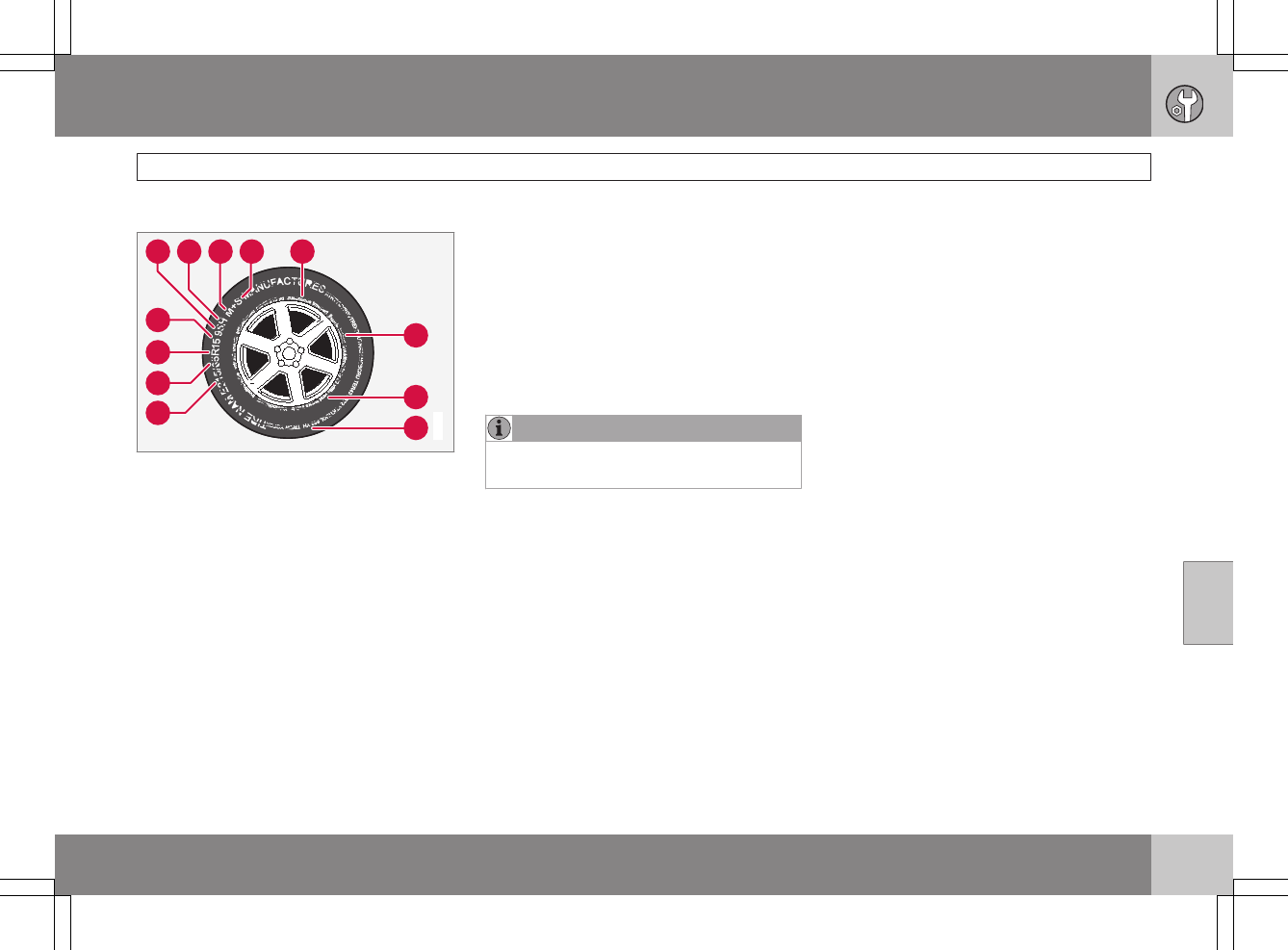Federal law mandates that tire manufacturers
place standardized information on the sidewall
of all tires (see the illustration).
The following information is listed on the tire
sidewall:
The tire designation (the following figures are
examples of a tire designation):
1.
215: the width of the tire (in millimeters)
from sidewall edge to sidewall edge. The
larger the number, the wider the tire.
2.
65: The ratio of the tire's height to its width.
3.
R: Radial tire.
4.
15: The diameter of the wheel rim (in
inches).
5.
95: The tire's load index. In this example, a
load index of 95 equals a maximum load of
1521 lbs (690 kg).
6.
H: The tire's speed rating, or the maximum
speed at which the tire is designed to be
driven for extended periods of time, carry-
ing a permissible load for the vehicle, and
with correct inflation pressure. For exam-
ple, H indicates a speed rating of 130 mph
(210 km/h).
NOTE
This information may not appear on the tire
because it is not required by law.
7.
M+S or M/S = Mud and Snow, AT = All
Terrain, AS = All Season
8.
U.S. DOT Tire Identification Number
(TIN): This begins with the letters "DOT"
and indicates that the tire meets all federal
standards. The next two numbers or letters
are the plant code where it was manufac-
tured, the next two are the tire size code
and the last four numbers represent the
week and year the tire was built. For exam-
ple, the numbers 317 mean the 31st week
of 1997. After 2000 the numbers go to four
digits. For example, 2501 means the 25th
week of 2001. The numbers in between are
marketing codes used at the manufactur-
er's discretion. This information helps a tire
manufacturer identify a tire for safety recall
purposes.
9.
Tire Ply Composition and Material
Used: Indicates the number of plies indi-
cates or the number of layers of rubber-
coated fabric in the tire tread and sidewall.
Tire manufacturers also must indicate the
ply materials in the tire and the sidewall,
which include steel, nylon, polyester, and
others.

